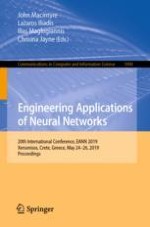2019 | OriginalPaper | Buchkapitel
A Robust Deep Ensemble Classifier for Figurative Language Detection
verfasst von : Rolandos-Alexandros Potamias, Georgios Siolas, Andreas Stafylopatis
Erschienen in: Engineering Applications of Neural Networks
Aktivieren Sie unsere intelligente Suche, um passende Fachinhalte oder Patente zu finden.
Wählen Sie Textabschnitte aus um mit Künstlicher Intelligenz passenden Patente zu finden. powered by
Markieren Sie Textabschnitte, um KI-gestützt weitere passende Inhalte zu finden. powered by
